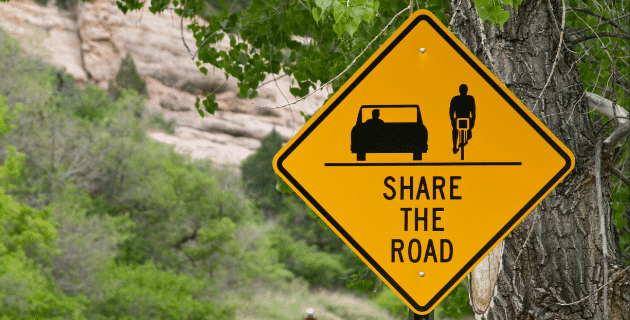When it comes to sharing the road with others, let’s face it, we don’t always know what (or whatnot) to do. Ask anyone who has ever been behind a slow-moving vehicle or who has tried to pass an 18-wheeler…
Here’s a quick guide on the rules of the road as they pertain to sharing it with trucks, buses, motorcycles, bicycles, slow-moving vehicles, and pedestrians—plus a final word on the importance of moving over for emergency vehicles.

Trucks
A big rig weighs considerably more than the average car, and could be as much as 20-30 times heavier, according to the Federal Motor Carrier Safety Administration. Their significant size and weight affect how quickly they can stop, go, and maneuver with lane changes and turns. Despite mirrors and a bird’s eye view, trucks also have large blind spots. And if your car is in one, the trucker likely has no idea you’re there.
-
- Don’t cut off a truck by driving into the empty space just in front of them. While it takes a normal passenger car traveling at 65 mph about 300 feet to stop, it takes double that distance for a fully loaded commercial truck at the same speed. If you’re too close, the truck may not be able to slow down and avoid a collision.
- Do not try to get past a truck to reach an exit or turn. Slow down and stay behind.
- Know the locations of a truck’s blind spots and avoid them. These are typically directly in front, directly behind, and along the sides, but especially the right side. The general rule is that if you cannot see the truck driver’s reflection in his or her side mirror, most likely he can’t see you.
- The longer the vehicle, the greater the turning path will be. Big rig drivers often swing wide to make a turn. That means swinging left just before turning right. Watch the trucker’s turn signals and expect the driver to swing the other way. Importantly, do not pass a truck while turning or you might find yourself in its path.
- Always pass a truck on the left side. Once you pass, do not linger. Move out ahead so the truck knows you are there.
- Do not tailgate. You may not have enough time to stop if the truck in front of you stops quickly.

Buses
Buses face many of the same stopping and maneuverability issues that trucks do. The driver has the added pressure of being responsible for a busload of people—and sometimes children. With constant stops, and people getting on and off, there’s even more to consider when driving near a bus.
-
- School buses have warning lights. A flashing yellow means slow down; a flashing red means stop. Stop no matter where your vehicle is, including if it is alongside the bus.
- Remember that it is illegal to pass a school bus that has stopped to pick up or drop off children.
- Expect that public buses also will stop frequently. Maintain a safe distance behind them.
- Large vehicles like buses have a higher center of gravity and must travel more slowly around curves and on-ramps. If you’re behind them, adjust your speed. Do not cut them off.
- Remember that buses have large blind spots too, similar to trucks. They are usually immediately behind the side flat mirrors and behind the rear bumper. Try to stay visible and avoid those areas.

Motorcycles
Motorcycles are smaller than cars and significantly smaller than trucks and buses. So, it’s easy to see how they could almost “disappear” in your blind spots. Motorcycles can come up quickly without you realizing they’re there. That’s why it’s always good to be extra observant and know every vehicle sharing the road with you.
-
- Do a visual check and use your mirrors when you change lanes, enter a major road or make a turn.
- Allow motorcycles to have the width of the full lane width when possible.
- Never try to pass a motorcycle that is sharing the same lane as you. Move to one side to give them the room to pass.
- Road conditions can cause motorcycles to change speed or direction suddenly. These include wet slippery surfaces, gravel, and potholes. Anticipate this and be ready to adjust your speed and lane accordingly.
- When you park your car, look for motorcycles before opening your car door.
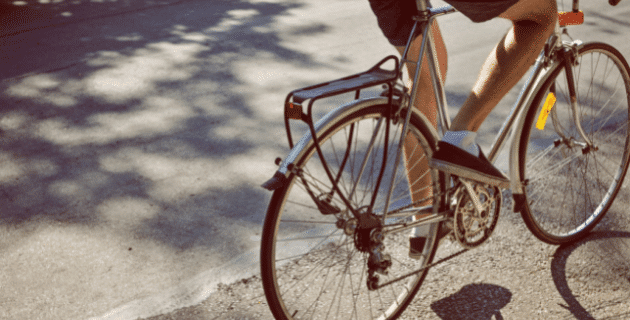
Bicycles
Bicycles have the right to be on the road with other vehicles, providing that they are following the rules. This includes proper lighting and reflectors at night, riding in the direction of traffic, signaling when changing lanes, and staying as near to the right curb as possible. In some cases, bicyclists may have a dedicated bike lane.
-
- Be aware that bicyclists may be permitted to ride on certain sections of highways where there is no alternate route and where bicycling is not prohibited by a sign.
- As with cars, bikes are required to signal turns. A left turn is the left arm extended to the side. A right turn is the left arm bent at a 90-degree angle with the hand at the top. The stop signal is the same with the hand at the bottom. Learn the hand signals so you know what the cyclist is communicating.
- Remember that your car weighs about 20 tons and a bike can weigh 20 lbs. or even less. Your car can do severe damage to a bicyclist and bike.
- Some states have laws about the amount of space you must give bicyclists. The general rule is to give them about 3 feet of clearance.
- After you park, look before you open your car door. There might be a bike coming.
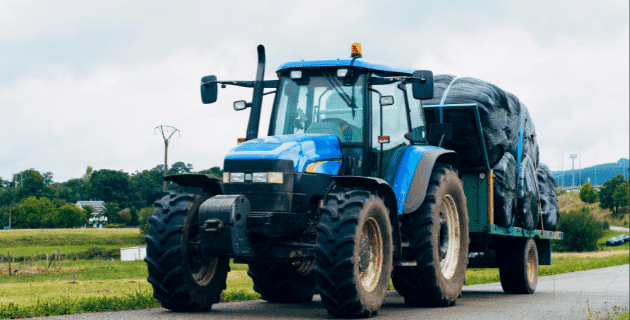
Slow-Moving Vehicles
It can be frustrating to be stuck behind farm tractors, animal-drawn carts, or road maintenance trucks. These slow-moving vehicles typically will display a reflective orange triangle so you are aware of their speed as you approach them.
-
- Slow down. Reduce your speed before you reach the slow-moving vehicle.
- Don’t sound your horn. You could scare a horse, and sounding a horn will not help a slow-moving vehicle move any faster.
- Be aware that animal-powered vehicles could make sudden movements.
- If there is enough room to pass them, do so carefully on the left.
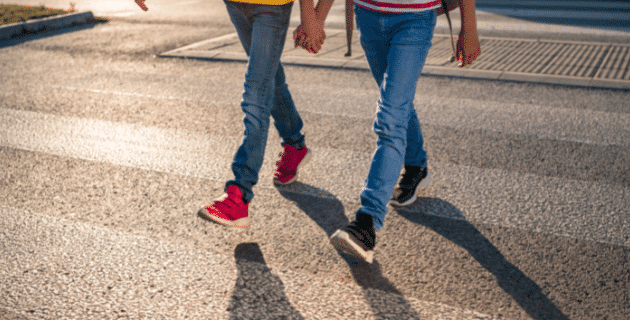
Pedestrians
Vehicles commonly share the road with pedestrians when they are crossing the street. Typically, this would be at a crosswalk. Check your local laws. In some cases, pedestrians do not always have the right of way. However, drivers do have a responsibility to be aware of people walking so they do not hit them.
-
- Stop at all crosswalks where pedestrians are waiting.
- Make sure your car is within 5 feet of the crosswalk. This helps blind pedestrians sense the presence of your vehicle.
- Do not turn before looking for pedestrians.
- Use extra caution in low visibility situations such as dusk, nighttime, or in bad weather. There may be a pedestrian whom you do not see.
- Never pass vehicles stopped at a crosswalk. They could be stopping for someone.
- Leave room. Consider a vehicle emergency braking with pedestrian and cyclist detection.
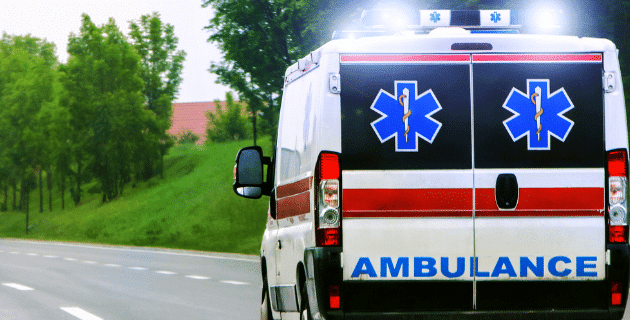
Emergency Vehicles
Police cars, fire engines, and ambulances need to get to the places where they can provide help to people in need. When you see flashing lights or hear sirens, that’s your cue to pull over to the side of the road. You can help emergency vehicles by giving them a clear path to their destination.
Following these rules for sharing the road will help keep you safe. Having the right auto insurance policy will provide peace of mind should you need that coverage. Safe travels.
This article is furnished by California Casualty, providing auto and home insurance to educators, law enforcement officers, firefighters, and nurses. Get a quote at 1.866.704.8614 or www.calcas.com
- Graduation – When to Remove Your Child from Your Auto Policy - May 18, 2023
- How to Prevent Catalytic Converter Theft - May 17, 2023
- How Much Does Home Insurance Cost? - May 17, 2023

